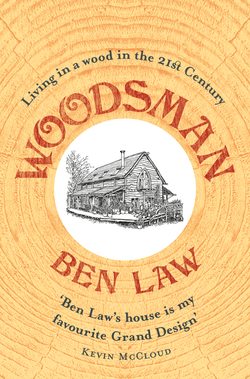Читать книгу Woodsman - Ben Law - Страница 14
ОглавлениеDuring my year of observation, I expanded my knowledge of the locality by regularly walking the generous collection of footpaths that weave through the parish. In doing so, I began to build up a map of surrounding foraging sites to which I could seasonally return over the coming years.
If I strike east from Prickly Nut Wood, I pass through an ancient wooded common, which has not been grazed for many years. Large, outstretched, pollarded oaks cast dappled shade over what were once pastures, now patches of wood sedge and bracken. Dark pools surrounded by thickets of blackthorn make this enchanted woodland a fine source of sloes. Whether for wine or gin, these ‘dry your mouth’ plums are worth collecting as the flavour when fermented or steeped in a spirit brings laughter to most who partake in their pleasure. The blackthorn itself can be the most impenetrable of trees, with sharp thorns that tend to poison the skin when pricked. Many a time have I noticed what seemed a scratch from blackthorn inflame in to a septic wound. This tree deserves respect. I remember reading how a 14-foot-wide hedge of blackthorn was once planted around Farnham Castle for protection. In the days when a septic wound could be life-threatening, the use of blackthorn would have led any potential invaders to have second thoughts.
The common is bisected by the road and it is here my life nearly ended some years ago in a car crash. I mention this as I ended up in a hedge and a spike of blackthorn pierced my eye. In protecting itself my eye formed a cataract and I had to have the lens replaced, so I am fortunate still to have good vision. I returned to the site a few months after the accident and cut myself a blackthorn stick from the broken bush near where I’d had my collision. It has made a good walking stick and is a good reminder to me of the fragility of all life. Blackthorn makes excellent walking sticks but it is a challenge to cut – a good pair of gauntlets is recommended. As part of my winter work involves laying hedges, I have some very heavy-duty leather hedging gloves that enable me to grasp the stem of blackthorn others might shy away from.
Hedge laying has begun to see a renaissance over the past 20 years. Stewardship grants have led farmers and landowners to consider the wisdom of starting their tractors and spending the day ‘flail cutting’ the top and sides of the hedge, and using much diesel to destroy the biomass that has grown within the hedgerow. Laying a hedge involves ‘pleaching’ (partially cutting through) the upright stem, in order to bend the stem over and lay it at an angle so that it forms a woven barrier and all knits together. The top (in the style of the hedge laying I carry out) is woven with hazel binders around upright posts of sweet chestnut about 1 foot apart. The resulting hedge not only looks attractive and uniform but forms a strong, long-lasting and stock-proof barrier, removing the need to use steel fencing altogether. It can then be left to grow on for about fifteen years and the next time it is laid, there will be a firewood crop yielded from the hedge row as well as some interesting elbow shaped pieces of timber formed from the re-growth from the pleached stems. These pieces can make fine walking sticks or, as I have found, can be used to make traditional knees in boat building. My first rowing boat contains ash and chestnut knees formed from material sourced whilst hedge laying. Laying a hedge also creates the perfect nest-building habitat. The angled stems, woven together and then supported by stakes and upright re-growth, make the ideal support for nest building. So a well-laid hedge will increase biodiversity, work as a stock fence, provide material for walking sticks and other projects, provide firewood, remove the need to use steel fencing, and can also provide a good site for foraging if the species used are well chosen. Surely this productive and diverse hedgerow, which can be managed with hand tools, must be a more sustainable alternative to repeated cutting with a tractor and flail cutter.
In 1992, I planted about a mile of hedging on a nearby property.
